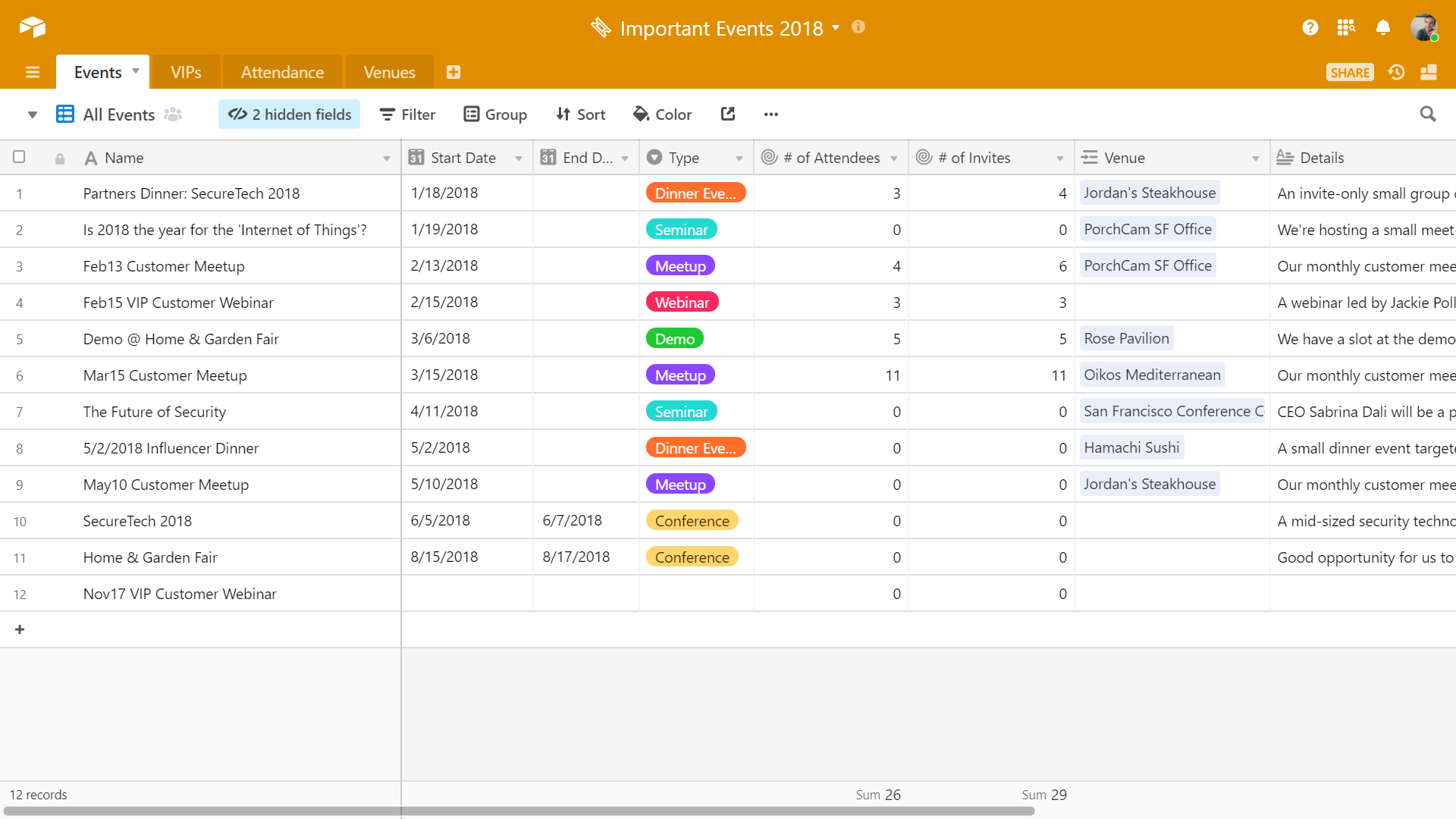
Like other entrepreneurs, Poulden knew his firm’s CRM didn’t need too many bells and whistles. He knew Airtable had worked for other VCs, including Ryan Hoover, who runs the investment group Weekend Fund and is founder of the tech website ProductHunt. “Everyone needed to be aware of the stage of every deal. “We needed a Kanban view of how deals progress through our pipeline,” says Poulden, who started his firm D2 nine months ago with two partners. When London venture capitalist Amory Poulden considered CRMs, it was Airtable’s views that drew him in. “I’m relentlessly building stuff.” Base with a bird’s-eye view “I’ve definitely discovered more of my true calling in the past year,” Lockey says. He’s working on adding a component to his current website to solve that problem. Lockey’s hunch is that his core audience-academic job seekers-have expertise to offer in the form of courses and curricula, but may not have the right venue to monetize them. After just three months, the newsletter had 3,500 subscribers. “It was easy to move data in and out.”Įarlier this year, he launched a weekly newsletter anchored by Bolt’s job listings. “I loved how configurable Airtable is,” Lockey says. After a MakerPad class in low-code developlment basics, he overhauled his agency’s CRM and rebuilt it with Airtable, starting on the sales side.
#Airtable crm serial#
It’s a dangerous pile of personal information in every staffing agency hard drive.īut Lockey is a serial entrepreneur, not a lifelong recruiter. Traditional recruiters tend to shy away from new technology, since they deal with so much sensitive information. Rebuilding the stack (with a stack of resumes) Lockey ditched his office space, said farewell to pared staff, and took the unfortunate turn as a chance to reassess. It also didn’t have an open API, and Lockey-a former engineer-found it difficult to build integrations.īy 2020, COVID-19 had complicated the recruiting business. The dashboards had many fields his staff of six didn’t need. Vincere was expensive, required a two-year contract, and the interface seemed excessive. He ran Bolt on a specialized CRM for staffing companies, Vincere, but quickly started looking for replacements. Niche CRMs: fancy, but inflexibleĪlex Lockey launched his education recruiting firm Bolt Jobs six years ago and scaled up, adding new employees each year.
#Airtable crm drivers#
Drivers weren’t the end customers (major advertisers were), but drivers were the young company’s first important business partners. Any team that needs a record of interactions with another group can create it using a CRM.įor example, in the early days of Halo Cars, the founders used Airtable as a CRM to handle data and relationships between the startup and drivers. Now, a CRM tracks the relationships between a huge range of business entities, from customer service agents and their callers to HR staff and potential new hires. When was the last time salesperson X got in touch with customer Y? A record of that interaction would be stored in the CRM. At the start, the relationship in question was between a company and its customers (or potential customers). The “relationship” side of the CRM is changing, too.

Today’s CRMs hold information about vendors, partners, outside collaborators, and even internal teams. Where the CRM was once a central place to stash and manage customer data, it’s now a system for managing data in all corners of a business. Salesforce may now be the most high-profile CRM, but even their uses for a CRM have stretched well beyond sales. But since the concept took off back in the 1970s, the CRM’s definition has radically shifted.
#Airtable crm software#
“Airtable is just extremely extendable.”ĬRM stands for “customer relationship management,” and the phrase usually refers to any software or system that helps a business interact with customers. Kenan Saleh used Airtable as a CRM to build Halo Cars, which he sold to Lyft in around a year.


 0 kommentar(er)
0 kommentar(er)
